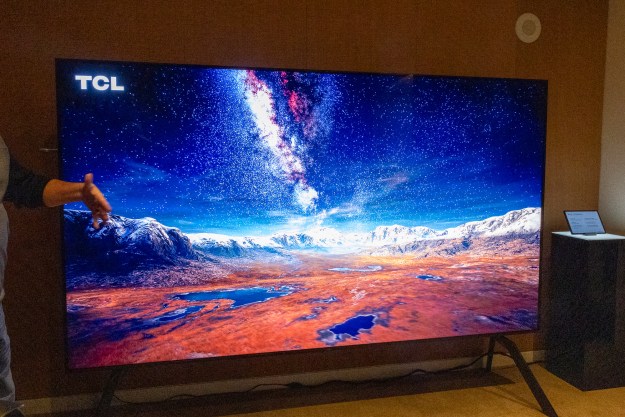If you’re fortunate enough to live someplace where the great outdoors forms part of your living space, you might want to equip your patio with a TV. But if you do, it will need to withstand sun, rain, or anything else that mother nature can throw at it. Furrion’s new Aurora line of 4K HDR outdoor TVs are designed to do just that, and come in three models for full sun, full shade, or anything in between, with prices starting at $1,400. The partial sun and full shade models are available now, with the full sun models coming in May, according to the company.

All three Furrion Aurora models (Full Sun, Partial Sun, Full Shade) are 4K HDR LED TVs that have been weatherproofed to an IP54 rating, which means they can withstand some dust and grit, and they won’t object to rain or being hit with a sprinkler — just don’t dunk them in the pool. Furrion says this protection is also sufficient for all-weather use, including snow. The Full Sun and Partial Sun models are also designed to be impact and scratch-resistant, given that they’re more likely to be placed where they could be exposed to an errant baseball, frisbee, or pool noodle.
New for 2022, the TVs are powered by LG’s WebOS smart TV software and come with compatible magic remotes so you can navigate the on-screen menus Wii-style, just by pointing and clicking. They also possess “RangeXtend” external antennas for stronger Wi-Fi signal reception — an important feature on a TV that might well be placed at the very edge of your Wi-Fi network’s coverage area.
The other big upgrade for the Aurora models is added support for HDR10 (though not Dolby Vision or other HDR formats). The TVs’ anti-glare screens should help you see all of that extra detail even in bright ambient light. Speaking of brightness, that’s the biggest difference between the Aurora models. The Full Shade series has a peak brightness of 400 nits, the Partial Shade series cranks that up to 750 nits, while the Full Sun models pump out a very bright 1,000 nits.
Furrion hasn’t released detailed specs on the Aurora models, so we don’t yet know things like how many HDMI ports they have, or whether they support HDMI 2.1 features like HDMI eARC, 4K @ 120Hz, variable refresh rate (VRR), or auto low-latency mode (ALLM).
When it comes to outdoor TVs, Furrion isn’t alone. You can also buy fully weatherproof models from Samsung, LG, SunBrite, and Seura.
Here’s how the pricing breaks down for the Aurora series:
Furrion Aurora 4K HDR Full Sun TVs

- 65-inch: $3,700
- 55-inch: $2,700
- 43-inch: $2,000
Furrion Aurora 4K HDR Partial Sun TVs

- 65-inch: $2,900
- 55-inch: $2,300
- 50-inch: $2,100
- 43-inch: $1,700
Furrion Aurora 4K HDR Full Shade TVs

- 65-inch: $2,500
- 55-inch: $2,000
- 50-inch: $1,800
- 43-inch: $1,400
Editors' Recommendations
- What we want to see from the next Apple TV 4K
- Samsung’s new 98-inch DU9000 4K TV is just $4,000. Can it beat TCL and Hisense?
- Let’s discuss an Apple TV 4K with a camera
- Hands-on with the Belkin iPhone Mount with MagSafe for Apple TV 4K
- Belkin drops a $50 mount for iPhone video calls on Apple TV 4K




